We headed out before the heat and humidity were in effect, on a HAL tour. Jane, Barry, Karen, Kallie and Carol joined my mom and me. Our tour guide Praveen, was excellent and gave us lots of information. The tour was entitled Mumbai on the Move and featured 2 sights which I had always wanted to see - the tiffin lunch program, unique to Mumbai, and the Dhobi Ghat the famous laundry.
We were off to experience the real everyday Mumbai. We begin again by stopping at the Gateway to India, the Indo-Saracenic archway, built in 1911. It is an impressive structure. Although it was originally constructed to commemorate the visit of King George V and Queen Mary. Originally it was conceived as an entry point for passengers arriving on P&O steamers from England, but today it is remembered for the departure of the British in 1948. There were monks, and hawkers aplenty here trying to get us to part with our money, but not in a objectionable manner.
We stopped the bus in front of the Victoria Terminal, which truly is the most remarkable rail station inspired by St. Pancras Station in London. It was built during Queen Victoria's Golden Jubilee year an is an extraordinary conglomeration of domes, spires, Corinthian columns and minarets in a style described by journalist James Cameron as Victorian-Gothic-Saracenic-Italianate-Oriental-St.Pancras-Baroque. Today half a million commuters use this station every day!
Then it was off to Gandhi's home - where he stayed when he was in Mumbai and conducted business and where many important decisions were taken by him and his colleagues. We spent time here touring the intact 3 story home, which is also a museum for Gandhi's life. The Mani Bhawan Gandhi Museum was the site that was Mahatma Gandhi's Bombay base between 1917 and 1934. The ground floor is a library which is still used for meetings. The second floor houses the spare room where he lived - the bedroom is preserved behind glass! There are photos covering the walls capture historic events and personal artifacts offer insight into Gandhi's hopes and struggles. Everywhere there are pictures and sayings and in one room there is a series of tiny dioramas that depict the important events of his life. There is one letter addressed to Hitler, asking him to refrain from war. Gandhi also corresponded with Roosevelt, Tolstoy and Einstein! I bought a book for $5 of his sayings. The house is in a lovely, but wealthy, neigbourhood that has small apartment houses of about 3 stories. This treelined street has vegetable vendors pushing carts for the wealthy so that they don't have to go to the markets. The few hawkers scattered as soon as the guards or police appeared.
With an hour spare time, the guide embarked on a drive of the city. After a while, the guide was persuaded by Karen to cut that short and go to a market for awhile, before our 11:30 appointment. We went to Colahba Causeway which was a series of stalls and state run stores called Cottage Industries. Gandhi had established the Cottage Industries to cut out the middlemen who were making money from the cottage industries of India's poor. Today this store features high quality goods, which are not marked up outrageously and which encourage the handicrafts of many villages. We made a fast trip, then we were off to the next features.
These apartments go for over 5 million each!!
Chowpatty Beach!
We arrived at the Churchgate Railway Station in time to see the dabba-wallahs, members of the Mumbai Tiffin Box Suppliers Association. Every day 4000 of them deliver fresh, home cooked food from 100,000 suburban kitchens to offices in the downtown area. Each lunch is prepared by a loving wife or mother, and packed in a set of stackable aluminum boxes. The meals are carried to their hungry recipients dangling from shoulder poles and bicycle handlebars and stacked on decorated handcarts. Tins are rarely, if ever, lost, and always find their way home again to be washed for the next day's lunch. This delivery service is ranked Six Sigma and the failure rate is 1 in 6 million. Prince Charles when we visited once asked to visit and meet a dabba wallah and was told yes if he was on time - which he was. When he married Camilla he invited 2 dabba-wallah's, all expenses paid, to the wedding. Precisely at 11:30 the lunches arrive by train into this station, are sorted and offloaded to a different group of dabba -wallahs, and delivered on time. We were lucky enough to witness the sorting process and to see them load and begin delivery. What a sight!
Then we boarded a local train to experience the life of a typical Mumbaikar! We traveled from this station for about 6 stops to Mahalaxmi Station- another one of Mumbai's busiest hubs on the local train network!
Nobody likes dirty laundry, but I was fascinated by the Dhobi Ghat! The Dhobi Ghat is on the banks of the local river. We saw 1,000, of the 2,000, stone cubicles, where 10,000 men labour to pick up dirty clothes from homes all over Mumbai to be soaped, soaked, boiled, beaten and thrashed. The next day, after being aired, pressed, folded and wrapped, the bundles are delivered to their owners. The secret that keeps the operation running smoothly, is the coded symbol that each dhobi-whallah places on every item. Invisible to the untrained eye, this mark ensures that nothing is lost. You just cannot imagine this sight until you see it. We were there at the high heat of the day, and although the workers were labouring in water, it certainly, once again drove home how manual much of the labour remains in this nation.
There were hawkers here selling purses for one dollar and bracelets, which many bought. There were also children begging for money and I wondered why they were not in school, which is compulsory. Maxine told me that if a child can contribute to the household income, they are taken out to beg, and that women routinely "borrow" children and babies to beg. One must always remember this is about eating or not.
Our bus picked us up and we toured some more of the city on our way to the ship or the market where some of us were being dropped off. We saw a billion dollar , 27 story home, that is not lived in by the owner, the richest man in India, because the astrologer told him it is facing the wrong direction. Astrology is still big here, and is used after children are born, for weddings, business, etc.





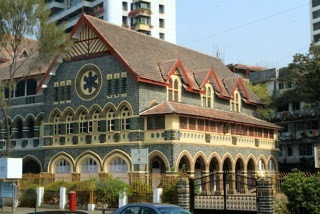








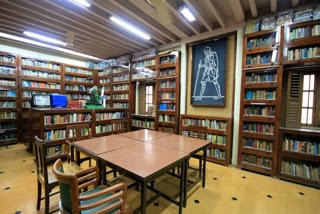










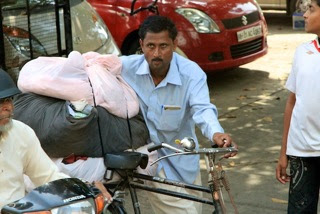







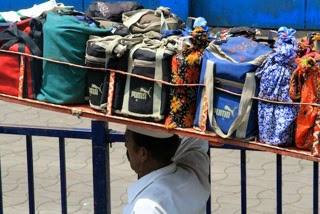






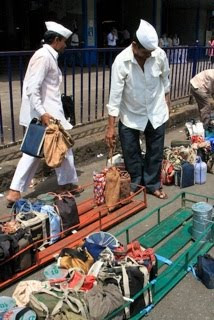




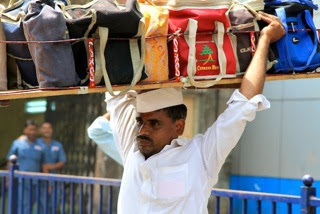






















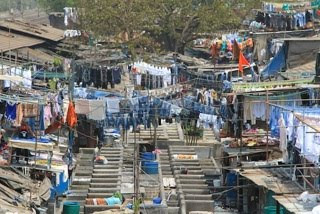










No comments:
Post a Comment